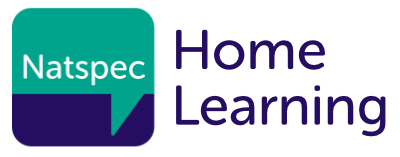National Star have been conducting supervised peer support sessions with their students.
Rationale
It was agreed that:
- prior to online learning taking place, students needed social contact with their peers
- many of our students are not able to keep in contact with peers independently and so would not have been able to speak with them for a number of weeks
- whilst all sessions would have a natural social element, as in a traditional classroom, a purely social session would be beneficial
- students’ personal tutor would put together groups of four students (the maximum number that could be seen on screen) and set up a social session
- the tutor would begin by leading topics of general conversation and it was hoped that students would then take the lead and conversation would naturally continue.
Learner cohort:
The peer support sessions have been trialled with all levels of learners at NSC@Hereford: from entry level one to level one.
All students appeared to enjoy the session and many students have requested more sessions of this nature.
Student groups of entry level 2 and above were able to continue conversation with little stimulus or prompts from staff. These sessions all ran over the hour that they were scheduled to run for during the first session. Subsequent sessions were reduced to 30 minutes in many cases and this continued the momentum and positivity of the initial sessions.
Entry level one learners required more stimulus from the tutor, however there were unexpected events that were very positive, for example, a learner taking the iPad around the garden to show the flowers that were growing, provoking a positive response from those present. The sessions for these learners have proved most beneficial when there are objects used e.g. lights to gain a response, and then allowing the learners to lead the sessions as they wish. One example was bubbles. The students’ families were emailed in advance as well so if they had some, they could also use them. Props that made a noise were also helpful in encouraging interaction. These sessions are most effective for between fifteen and twenty minutes.
Sessions also had the unexpected benefit of encouraging some learners who were not usually talkative to converse more. This may be due to the sessions including fewer students than many sessions that take place at the college, the novelty of a new way of communicating and the fact that the learner was able to leave at any point by hanging up. Additionally, for our more able learners, it prompted them to share social media contact information encouraging more independent contact not facilitated by staff (a decision would need to be taken by staff on whether this was appropriate dependent on the capacity and needs of individual learners).
Subsequent conversations with learners and parents highlighted other benefits:
- Reassurance that staff and students were well
- Reassurance that other learners were at home in most cases
- Understanding that what they were feeling was shared by others e.g. one student stated that they were missing a particular session at college, this was agreed by the other students and they discussed some of the events that had happened so far in the year: appeared to lift spirits.
Top tips and key considerations
- Consider the issues outlined in previous advice around issues and potential solutions, including GDPR, safety, safeguarding, resources etc.
- Consider the number of students in each social session, and the best combination of students to facilitate discussion.
- Be aware of when to step back from the conversation so that the students are fully leading where appropriate.
- Be mindful of ensuring that you are the last to leave a call.
- Keep a note of the time and when interaction ebbs, alter the time accordingly.
What resources are required?
For entry level one and below it is helpful to have props to stimulate interaction, obviously a device with an outline platform is needed.

